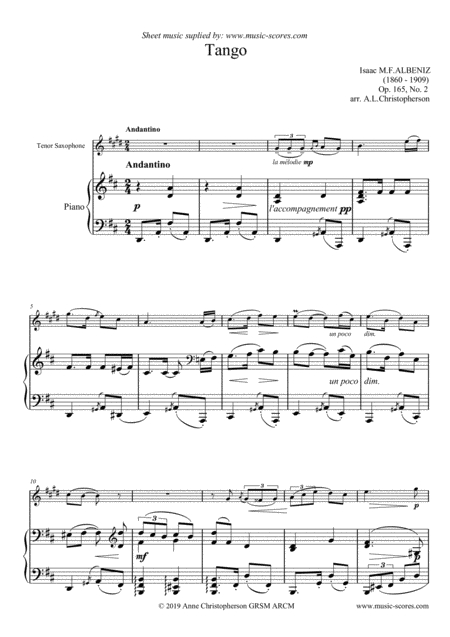Piano,Tenor Saxophone - Level 4 - Digital Download SKU: A0.721947 Composed by Isaac Albeniz. Arranged by Anne L Christopherson GRSM ARCM. Concert,Holiday,Latin,Love,Wedding. Score and part. 5 pages. Music-Scores.com #5356063. Published by Music-Scores.com (A0.721947). Tango, from the suite Espana, Op.165, No.2. A well known piece from the middle period of the composers life, when he was living in Spain and hugely influenced by Spanish dance music and the guitar.Duo for Tenor Saxophone and Piano.Playing time about 2 minutes.Arranged by Anne L Christopherson GRSM ARCM at https://www.music-scores.com
